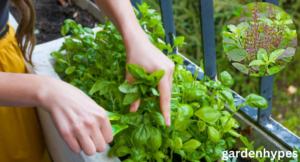Basil Shortage What’s Behind It and How to Cope
Basil—a fragrant herb that has graced kitchens around the world—faces an unexpected shortage. From home cooks to restaurant chefs, everyone is feeling the pinch of this culinary crisis. Let’s dive into why this shortage is happening, how it’s impacting the food industry, and what we can do about it.
click in link Garlic shortage
Introduction to Basil and Its Importance
Why Basil Is a Culinary Staple
Basil isn’t just another herb; it’s a superstar of the culinary world. Think of classic dishes like pesto pasta, Caprese salad, or even a simple Margherita pizza. Without basil, these dishes lose their magic.
Health Benefits of Basil
Beyond flavor, basil offers a wealth of health benefits. It’s packed with antioxidants, vitamins, and anti-inflammatory properties. Basil is also known for aiding digestion and reducing stress, making it a favorite for wellness enthusiasts.
Current State of the Basil Shortage
Overview of the Global Shortage
Reports of a global basil shortage have surfaced, with supply chains struggling to meet demand. Supermarkets are running out, and restaurants are tweaking their menus to cope.
Key Regions Impacted
The shortage is hitting regions that depend heavily on basil, including Mediterranean countries, North America, and parts of Asia. Basil imports have also slowed down due to logistical challenges.
Causes of the Basil Shortage
Climate Change and Weather Conditions
Droughts and Heatwaves
Climate change has caused severe droughts and rising temperatures, making it difficult to cultivate basil in traditional farming regions.
Unpredictable Rainfall
Unreliable rainfall patterns disrupt planting and harvesting schedules, leaving farmers unable to maintain consistent yields.
Supply Chain Disruptions
Transportation Delays
Global shipping and transportation challenges have caused delays in getting fresh basil to markets.
Labor Shortages
Fewer workers in agriculture and logistics are slowing down production and distribution.
Agricultural Challenges
Pests and Diseases Affecting Basil
Basil crops have been hit by fungal infections and pests, further reducing yields.
Declining Fertile Land
Urbanization and soil degradation are shrinking the areas available for farming, impacting basil production.
Impacts of the Basil Shortage
Rising Costs for Consumers
Basil prices have surged, making it less accessible for the average household.
Effects on Food Industry and Restaurants
Restaurants are reworking their menus, replacing basil with other herbs or flavors. Some dishes are even being temporarily discontinued.

Alternatives Being Used
Chefs and home cooks are turning to substitutes like parsley, spinach, and even mint to replicate basil’s flavor in recipes.
Potential Solutions to the Basil Shortage
Sustainable Farming Practices
Hydroponics and Indoor Farming
Innovative farming techniques like hydroponics and vertical farming can produce basil year-round, regardless of weather conditions.
Organic Pest Control Methods
Using natural pest control can minimize crop damage without harming the environment.
Better Supply Chain Management
Streamlined logistics and better storage solutions can reduce waste and ensure fresher basil reaches consumers.
Community and Individual Efforts
Local gardens and urban farming initiatives can help communities grow their own basil and reduce reliance on imports.
Tips for Growing Basil at Home
Choosing the Right Environment
Light and Temperature Requirements
Basil thrives in sunny, warm conditions. A windowsill with plenty of sunlight is ideal for indoor growing.
Soil and Watering Tips
Use well-draining soil and water consistently, but avoid overwatering. Basil doesn’t like soggy roots!
Preventing Common Basil Problems
Pests to Watch Out For
Keep an eye out for aphids and spider mites. Neem oil can help keep them at bay.
Signs of Overwatering or Underwatering
Yellow leaves often indicate overwatering, while dry, crispy leaves signal underwatering.
The Future of Basil Supply
Innovations in Agriculture
Advancements in technology, like AI-driven farming, could revolutionize how basil and other crops are grown.
Policy Changes for Sustainable Agriculture
Government policies encouraging sustainable farming practices can help stabilize basil supplies in the long run.
Conclusion
The basil shortage is a wake-up call for both farmers and consumers. While challenges like climate change and supply chain disruptions persist, sustainable farming and home gardening offer hope for the future. Whether you’re a foodie or a farmer, finding ways to adapt is essential.
click in link Garlic shortage
FAQs
- What is causing the current basil shortage?
Climate change, supply chain disruptions, and agricultural challenges are the primary culprits. - Are there alternatives to fresh basil during the shortage?
Yes, alternatives like parsley, spinach, and mint can replicate basil’s flavor in some recipes. - Can basil be grown indoors year-round?
Absolutely! With the right environment and care, basil can thrive indoors.
4. How can the food industry cope with the basil shortage?
By exploring substitutes, reducing waste, and investing in sustainable practices, the food industry can adapt.
